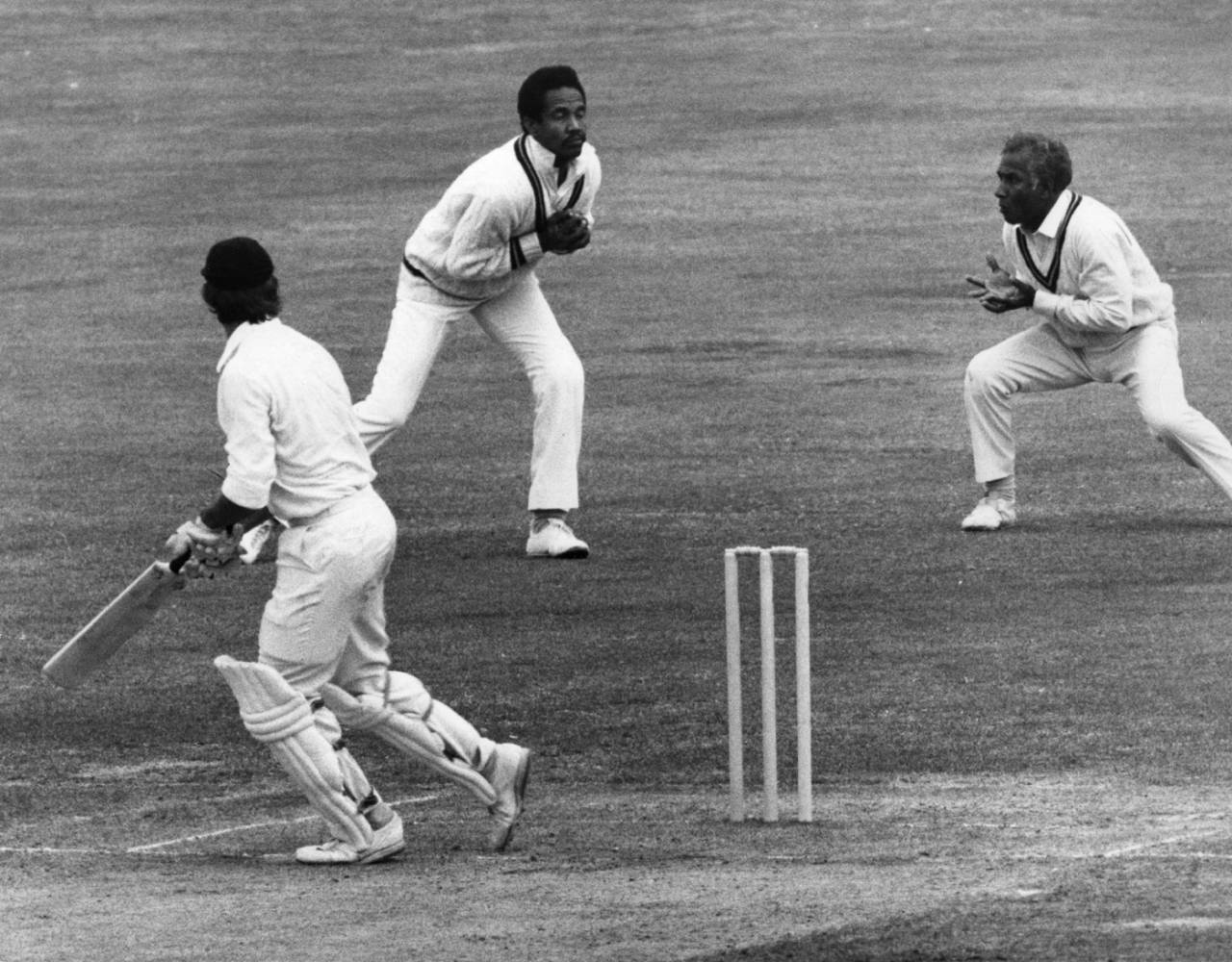Martin Williamson's story of
going to a one-day international during the 1973 West Indies tour of England reminded me that that series was for me too, a formative one, but in a radically dissimilar way. I
have written in this space about a Test tour that I did not watch on television but only tracked - live, in a manner of speaking, by faithfully following its progress - from afar: Pakistan's tour of the West Indies in 1976-77. Well, I tracked the 1973 West Indies tour of England too but well after the fact, years later, by repeatedly perusing, for a period of a few weeks, every Sunday, its match reports and photographs in the
John Player Cricket Annual.
Wikipedia notes that, back in the day when cigarette and tobacco companies still sponsored sports, "the 'John Player Special League' was launched in 1969, as the second one-day competition in England and Wales alongside the Gillette Cup". The John Player cricket annual was brought out - like
Wisden - as an annual report on the entire summer's cricket. The 1973 report included photographs, match reports and statistics for not just the county season but the summer's Tests as well: the tours by New Zealand and West Indies. The former lost 0-2 to England; the latter won 2-0. (New Zealand were certainly no pushovers; they lost the
first Test by 38 runs chasing a target of 479, even as their captain, Bev Congdon, made a brave 176; they drew the
second after amassing 551, before finally succumbing by an innings and one run at Headingley in the
third Test.)
But it was West Indies who commanded my attention and exerted the strongest hold on my imagination. The 1973 outfit featured several batting greats: Garry Sobers, Rohan Kanhai, Clive Lloyd, Roy Fredericks and Alvin Kallicharran; amazingly Sobers batted at seven. They scored heavily throughout - 652 in the third Test,
at Lord's - and won comfortably despite a bowling attack that, to eyes accustomed to seeing four genuine quicks in a West Indian line-up, might seem a little underpowered - Keith Boyce, Bernard Julien, Inshan Ali, Lance Gibbs, Sobers - but which boasted plenty of variety and not a little pace. To round things off nicely, Boyce and Julien were sparkling all-round talents capable of lighting up a ground with their displays of hitting. For Sobers and Kanhai, 1973 was their last hurrah in England, their 150-plus scores at Lord's their final flourish.
But as I said, I didn't "see" any of the summer's cricket. Instead, a few years later, once I had located the John Player 1973 Annual in my library, I returned to it repeatedly, obsessively, over the course of several weekend trips to the shelves. I would arrive close to opening time, make my way unerringly to the cricket section, pull down the annual and start, as they say, from the beginning.
Why was my obsession centred on that year? Why on that issue of the John Player Annual? Well, it was the only one on display; that addresses the most pressing part of the inquiry. The other part of the answer lies in the luscious colour and black- and-white photographs. I do not remember the photographers - perhaps Ken Kelley, perhaps Patrick Eagar? - but their efforts were stellar. Those were the days of helmet-free batting, of long-sleeve shirts, of flannels and creams, and bats with manufacturer's trademarks clearly visible. It made for the right kind of framing of the cricketing action. In the background you could see the West Indian crowds: colourful, apparently noisy, studiously devoid of the supposed decorum of Test match crowds. You could see it all, on glossy paper, no less.
In those days, well before Youtube made it possible to repeatedly view videos of greats of days gone by, the diligent efforts to commit to memory every visible trace of our cricketing heroes' efforts were concentrated on the humble photograph, the written word, the bare particulars of a scorecard in text. They had to tell as comprehensive a story as possible, one aided by a febrile and excitable imagination, the kind only possible in an age of just the right amount of callowness. In this context, a publication like the John Player Annual, a sponsor's report on their "product" was manna from heaven; yet another almanac - there could never be enough of those - another colourful compendium of cricket to be bundled up with for hours, days and weeks.
